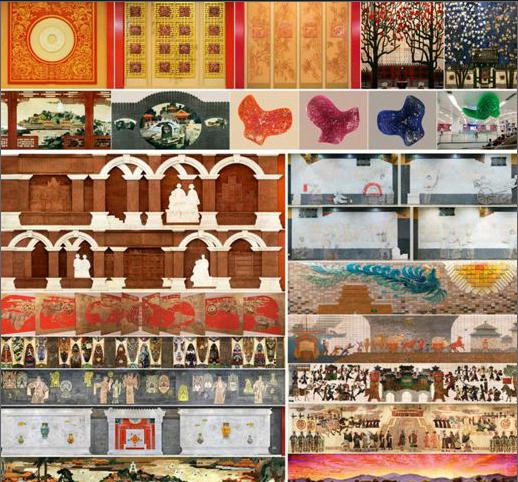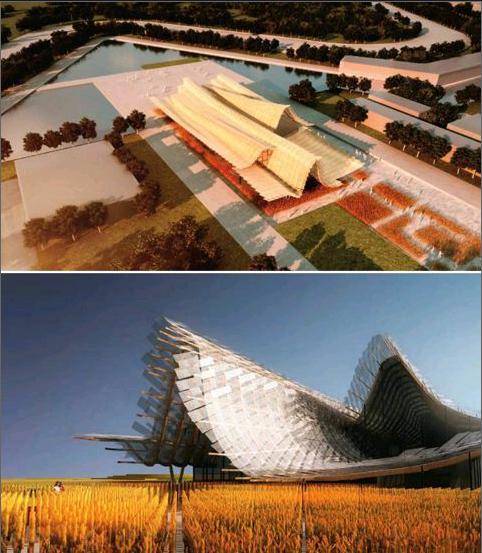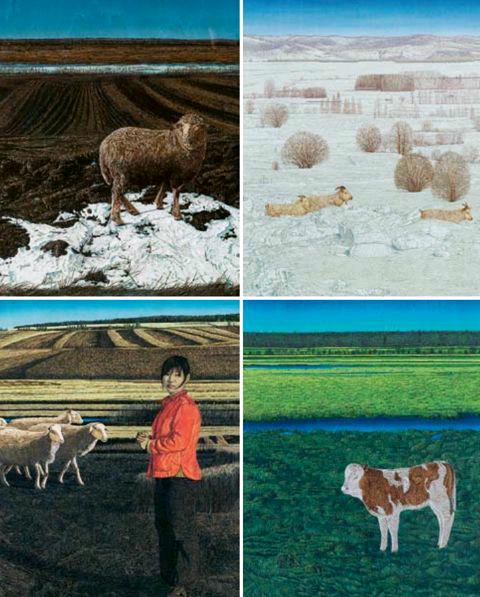Art of the Ages
by+Gao+Suna+and+Cheng+Che



The biggest and most presti- gious art exhibition in China, the National Art Exhibition is held every five years. The 12th National Art Exhibition was split into two parts. The first started in the second half of 2014 when selected submissions in various genres were displayed in 13 places nationwide. The second phase spanned from December of 2014 to January of 2015 when 576 pieces were displayed at the National Art Museum of China in Beijing, including seven gold prize winners, 18 silvers, 49 bronzes and 86 honorable mentions.
One of the most jaw-dropping exhibitions in the world, Chinas National Art Exhibition comprehensively displays the countrys artistic features, through which the development of Chinas art can be traced.
Oil Painting with Chinese Flavors
Art masters such as Li Tiefu and Xu Beihong introduced oil painting to China at the beginning of the 20th Century, and after a century of development, the Western style has gained a new look in the East.
According to Xu Jiang, president of the Chinese Oil Painting Association, from a macro perspective, oil painting represents advanced Western culture and gradually finds new root in China. Over past decades, Chinese culture has fully absorbed the new genre and formed its own language. Nowadays, Chinese oil painting has become one of important genres of the art.
The oil paintings displayed in this exhibition are marked by distinctive Chinese sentiment and strong Chinese flavors. Misty Sky and Land by Qi Haiping used paint to create a pattern popular in traditional Chinese painting and Scenery over the Bridge by He Hongzhou, a gold prize candidate, painted portraits of Lin Fengmian, Wu Dayu and Lin Wenzheng, three masters who first promoted oil painting in China, to pay homage to oil paintings century of growth in China.
“This exhibition harnessed major talents and promoted outstanding work,”remarked Wen Lipeng, former vice president of Chinese Oil Painting Association,“We used to look up to Western oil painting, but today, we can at least maintain eye level with them. Of course, Chinese artists still need to enhance their skills and pay more attention to social issues rather than personal feelings.”
With regards to the shortcomings of the oil displayed in this exhibition, Xu Jiang believes that some artists forego deep meditation on life and opt instead for repeating themes and composition. Some even copied patterns of past awardwinning work. Additionally, some young artists have little understanding and few ideas about the ontological language of oil painting and are unable to make their own observations. Many works looked photographic, as if they were copied directly, a result of the new media era, which has changed philosophies about images. “Today, when people see something, they are used to taking pictures with cellphones but fail to thoroughly observe with their eyes. This era begs the question: Do we see more or less?” asked Xu.

Diverse Frescoes
The fresco section of the exhibition showcased the development and trends of the genre over the past five years. One distinctive feature was a breakthrough in the original concepts and media used for frescoes, with new materials such as metal, potter, painting, sculpture, mixed media as well as sound, light and electricity being employed. But as a whole, the fresco genre remained questionable. Some oil paintings, Chinese paintings and installations were included in the fresco category only because they were created to decorate buildings. Liu Bingjiang, deputy director of the Fresco Committee of the Chinese Artists Association, was impressed by the great variety in terms of themes, styles, materials and creative thoughts, but the great variety also led to an unclear definition of fresco. “Works even included sculptures, New Year paintings and wood carvings,”revealed Liu. “They water down and confuse the definition of fresco. It seems any kind of art can be selected for this section. I think we need to comb the history of frescoes from home and abroad and determine the major features of influential work so we can define academic and artistic standards for the fresco category.”
“We supported and encouraged artists to produce more creative and experimental work in terms of craftsmanship and expressive methods,” explains Hou Yimin, chairman of the Chinese Fresco Association.“We think our initiative will promote the development of frescoes. Some works perhaps confuse the definition of fresco, but we think it should be more inclusive. The best works are decided by the judges.”
New Printmaking Techniques
The print works in this exhibition primarily focused on daily life and ordinary people. For instance, Peng Weis In Their Thirties and Zhang Minjies Dancing at Square employed new perspectives to breathe fresh life into art depicting lives of Chinese youth and seniors. The nations major events were also documented by some works, characterized by advanced carving techniques and growing mastery.
This exhibition showed the sound development of Chinese printmaking, with aesthetic concepts extending. Woodblock painting still accounted for the bulk of the printmaking work, and artists seemed to improve their control over themes of landscapes and figures and placed greater attention on composition, shadowing, layers and perspective. Stone print artists took optimal advantage of the material and created novel imagery as well as visual perception. Silkscreen printmaking can easily produce an effect of spatial ambiguity and cause a strong visual impact. The mixed usage of new material and techniques seems the trend for future development of printmaking in China.
According to A Ge, deputy director of the Printmaking Committee of the Chinese Artists Association, this exhibition demonstrated the development of Chinese printmaking over the past five years and witnessed many young artists mature quickly. Compared to past National Art Exhibitions in which other genres were dwarfed by the volume of wood printmaking, this exhibition included a healthy variety and hinted at a bright future, but problems remained. “Some work focused too much on skills while neglecting connotations of philosophy and sentiments,”A Ge remarked. She suggests young artists continually work to improve their social insight.
China Pictorial2015年2期
